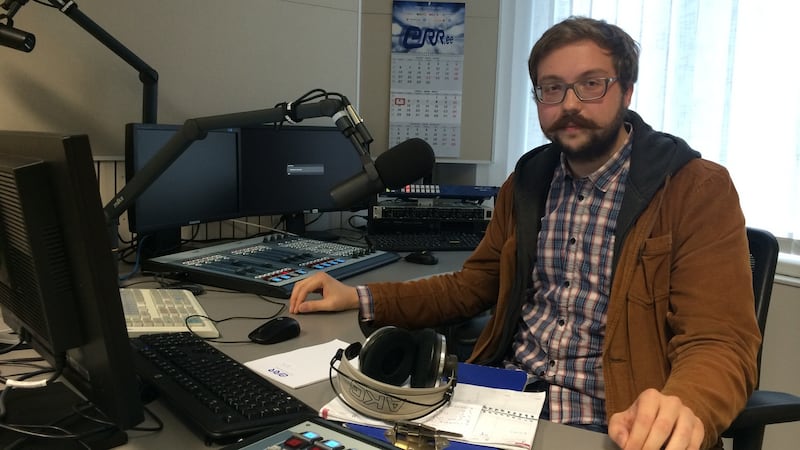On a rainy July afternoon, as Estonians chatted over the burble of football on the television, Narva’s Old Trafford restaurant did not feel like a place on the frontline.
Yet it is just 500m from a river that divides Estonia and Russia, cleaving the nervous eastern edge of Nato from the territory of a combative Kremlin, as the military giants shadow box around the Baltic as part of a "new cold war".
Amid major war games by both sides, Nato leaders are using their current summit to pledge 1,000-strong multinational battalions to Poland, Lithuania, Latvia and Estonia.

For Warsaw and the Baltic states, these units will help prove Nato's commitment to defend all its members, and face down a Russia whose aggression in Ukraine has sent shivers through its neighbours.
The Kremlin denies having designs on any Nato countries, and sees the battalions – to be led by US, UK, Canadian and German forces – as western efforts to weaken, isolate and demonise Russia.
Narva sits on the fault line between these opposing world views. It is the third-largest city in Estonia, an overwhelmingly pro-EU and pro-Nato nation of 1.3 million people, but 82 per cent of Narva's 58,000 residents are ethnic Russians and 94 per cent speak Russian over Estonian.
The Kremlin's propaganda-heavy TV channels are watched in Narva – which is geographically closer to St Petersburg than Estonia's capital, Tallinn – adding to suspicion in the country about its residents' loyalties.
“Locals are upset that in Tallinn they think Narva has only poverty, crime, HIV and drug addiction. Narva does have these problems, but they are far from the whole story,” said Mihhail Komasko, a journalist in Narva for Estonia’s public broadcaster.
Russian rulers
The city was fought over for centuries by Scandinavian and Russian rulers, and its castle, founded by the Danes in the 13th century, stands across the Narva river from a vast Tsarist fortress that dominates the Russian town of Ivangorod.
Redevelopment of Narva after the second World War brought in workers from Russia turning ethnic Estonians into a minority in the city.
"In Estonia, Narva is unique, but there are places like it in the wider region," said Aet Kiisla, director of academic affairs at the Narva College of Tartu University. "The countryside around here is like anywhere else in Estonia, but the city is very Russian."
The same could be said of many parts of the former Soviet Union that saw Russians arrive during post-war industrialisation – including Donetsk in eastern Ukraine, a twin town of Narva and now a separatist stronghold. Estonia is not blighted by the same levels of poverty, crime and corruption as eastern Ukraine, and Russia's influence in politics, business, culture and the security services is far weaker here. Not that Estonia's defenders take its huge neighbour lightly. Russia dominates the 2015 review by the Estonian internal security service ( Kapo), which says the Kremlin believes "a good neighbour is a controlled neighbour" and "will remain aggressive as long as it can".
From cyberattacks to propaganda to espionage, Russia has posed the key threat to Estonia since it regained independence in 1991. After Estonia captured alleged Russian agents, Moscow's security services seized Kapo officer Eston Kohver near the border in 2014.
Tallinn said he was abducted from Estonia, while Russia insisted he was arrested on its territory. Last year, on a border bridge, Kohver was exchanged for Aleksei Dressen, a Kapo officer who spied for Moscow.
Such cases raise questions over the reach of Moscow's security services – particularly in ethnic-Russian communities that make up about a quarter of Estonia's population and a little more in Latvia. "It's not about monitoring the whole [Russian-speaking] community, but there are certain individuals [of concern]. And some NGOs are not what they claim to be," said Martin Arpo, the deputy director-general of Kapo.
The Ukraine crisis and the Kohver and Dressen cases sharpened awareness of Russian espionage, “but the growth of the threat in Estonia has been rather constant since the 1990s,” Mr Arpo said. “Weakness provokes – this is our experience in Russia’s case,” he added.
Provoking through weakness
“So in the big picture, having Nato troops here will help us. It is so much cheaper and smarter to have Nato troops based here, to avoid any miscalculation and not to provoke through weakness.” That view is shared by political and security chiefs across the Baltic states and Poland, and accepted by most of Narva’s ethnic Russians.
"There are no problems here between ordinary people. It's all politics," said Siberian-born Natalya outside the Old Trafford restaurant. "Let Nato come and defend Estonia, it's their job. But I don't think Russia is going to attack Europe. "
Natalya’s husband and daughter have Estonian passports but, like 6 per cent of Estonian residents Natalya has no citizenship.
“People in Narva know the difference between here and there,” said Kiisla at Narva College, with a glance in Russia’s direction. “And not just in material ways – they do value our democracy and openness. Russians here might feel a bit special, but they also feel like part of Estonia.”











